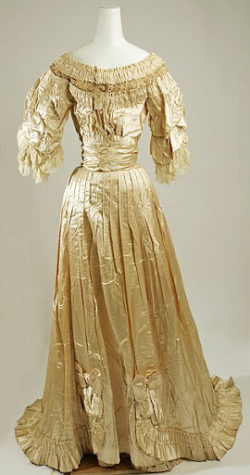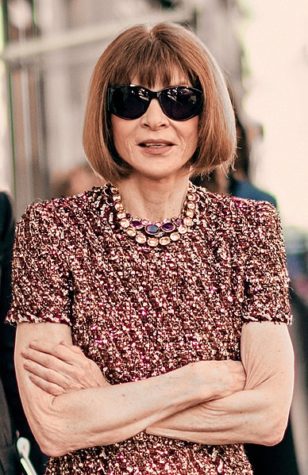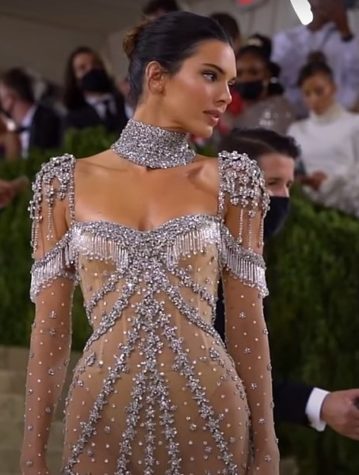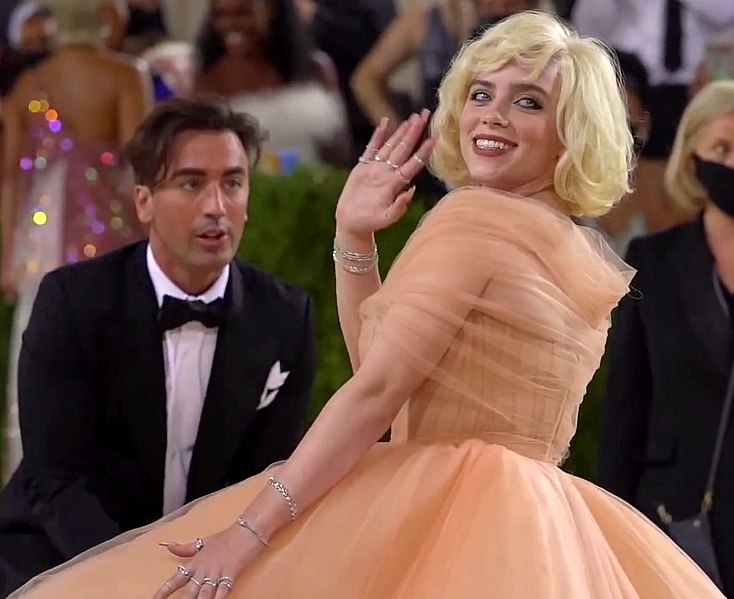Glamour, Glitter, and Grandeur: A History of The Met Gala
The Met Gala, a fundraising event hosted by the Metropolitan Costuming Institute, is known as the night fashion that takes center stage.
Condé Nast (through Vogue Taiwan), CC BY 3.0
The Met Gala, known as “fashion’s biggest night out”, has become an insanely popular event, attracting dozens of designers and high profile guests. Here is Billie Eilish attending the 2021 Met Gala.
The Met Gala, dubbed ‘fashion’s biggest night out,’ needs no introduction. Held on the first Monday each May, the Metropolitan Museum of Art flings open its doors to welcome the rich and famous into its opulent halls for a night of star-studded glamor. Founded by Eleanor Lambert, an American fashion publicist, it has become an integral part of the funding for the Metropolitan Museum of Art’s Costume Institute, raising over 13-15 million dollars from previous galas.
However, it wasn’t always like this. The Gala was once a small, somewhat private affair, open only to New York’s wealthy elite. It consisted of midnight suppers held in venues such as the Rainbow Room and Waldorf Astoria until 1971, when the Gala was moved to its new locale: the Metropolitan Museum of Art. During the 1970s, the Gala started to become far more extravagant with the arrival of Diana Vreeland, an editor in chief at Vogue as well as a special consultant to the Costume Institute, which is dedicated to the preservation of a collection of nearly 36,000 fashion and costume artifacts. Under Vreeland’s leadership, the Gala started to take on more of the characteristics we know today, such as the iconic themes of each gala. The first ever theme that Vreeland created was The World of Balenciaga, an exhibition at the Met detailing the rise of Spanish fashion designer Cristobal Balenciaga.
In spite of the changes that Vreeland made, it would still take time, cajoling, and the intervention of Anna Wintour for the gala to become what we know today.
First, one needs some context. The Costume Institute was created in 1946 by Neighborhood Playhouse founder Irene Lewisohn. It was originally an independent entity formed by Playhouse in 1937 before merging with the Met. In 1959, it became a curatorial department in the Museum, with one of its first curators being Stella Blum, an American fashion historian.

One hang-up began to plague the newly formed Institute, that of money. The Costume Institute was (and still is) the only department in the Museum which had to fund itself, requiring donations to function.
Then in 1948, Eleanor Lambert, a pioneer of America’s fashion industry as well as the creator of the fashion public relations industry, came up with an idea: the Met Gala. The Gala would cater to the city’s rich and famous, and in return receive money to keep operating.
For a few years, this plan worked perfectly. Wealthy socialites happily spent their money on tickets to the Gala. However, over time, Gala attendance began to dwindle. People were getting tired of the same old formula of a dinner, polite conversation, and expensive, yet boring, venues. They wanted something different, something that was exciting. And the Gala delivered with the appointment of Diana Vreeland.
Born on September 29th, 1903, Diana Vreeland was a French American fashion editor. Originally a columnist for Harper’s Bazaar, she worked closely with Richard Avedon and Alexey Brodovitch, with Avedon praising her as the “only genius fashion editor.” In 1962, she began to work at Vogue magazine. Only five years later however, she was fired from the magazine, allegedly because she spent far too much money on her extravagant ideas. Vreeland was then hired by the Metropolitan’s Costume Institute in 1971 as a consultant, where she made a splash on the event committee. One rumor states that former First Lady Jaqueline Kennedy, a previous client of Vreeland’s, raised money to fund Vreeland’s salary during her first two years.
Vreeland took her signature vision of opulence and boldness and began to apply it to the languishing Met Gala. Instead of organizing another typical society party for the 1973 Met Gala, guests were sent down an elevator and emerged on the other side to a party filled with atmospheric, ambient music and faceless mannequins with pantyhose pulled over their heads in a dreamlike setting. Needless to say, party guests were pleasantly surprised.
Vreeland’s exhibitions brought in record numbers of crowds — and donations — to the Costume department. Vreeland also expanded the Gala’s invitation list to include distinguished celebrities at the time, such as Cher and Diana Ross. The night was full of music, feasting, and dancing, with dessert tickets costing a hundred dollars. That way, common folk who couldn’t afford the initial ticket prices could at least stay for part of the night and enjoy the spectacle.
Vreeland breathed much-needed life back into the Gala, and the results were staggering. After her death in 1989, the Gala continued to attract famous attendees and massive media coverage, with Princess Diana herself attending the 1996 gala after her highly publicized divorce with Prince Charles. Anna Wintour hosted the Gala in both 1996 and 1997, who then became chairperson of the Costume Institute and ushered in the next phase of the Met Gala, turning it into the corporate affair that it is today.

Born on November 3rd, 1949 in London, Wintour started off her enigmatic career at the influential Biba boutique at the age of 15. In 1970, after Harper’s Bazaar briefly merged with Queen to form Harper’s & Queen, Wintour got a job as one of its first editorial assistants. However, despite Wintour’s hard work at the magazine, she was fired after only nine months on the job for her innovative shoots, taking photographs that deviated from the norm in the publication. She then went to work for the magazines Vida and New York before landing a job at Vogue, a life-long aspiration of hers. Wintour began to swiftly climb the ranks among the Vogue staff, taking over Vogue’s UK edition in 1985. She subsequently fired over half the staff and made radical changes to the magazine, catering more to American audiences.
After a somewhat disastrous stint at House & Garden, Wintour became editor of US Vogue, where her radical approach to fashion began to shine. She made big changes, once again firing a significant portion of the staff and altering the style of cover photos. Pre-Anna Wintour, Vogue cover shots featured headshots of models, with heavy makeup, jewelry and offset by a colorful background. Instead, Wintour’s cover for the 1988 edition featured 19 year old model Michaela Bercu standing outdoors in a full body photograph, wearing a jeweled jacket by Christian Lacroix and a pair of faded jeans. On the 1989 cover, model Estelle Lefebure was photographed in a bathrobe with wet hair and no apparent makeup. These covers sparked a change in Vogue’s direction, and under Wintour’s influence, returned it to the heights of success it had seen under Diana Vreeland.
Wintour, upon her appointment as chairperson, bought in the full forces of Vogue for the Gala. One of the first changes made by Wintour was to move the date of the Gala from December to April after the canceling of a Chanel exhibition, before settling on the date of May 1st for the Gala. Combined with this, Wintour, along with Andrew Bolton, Head Curator of the Costume Institute, and Harold Koda, who served as head curator before retiring in 2016 , introduced exhibits chock full of elaborate displays, as well as collaborations with other departments. One such collaboration was ‘China: Through the Looking Glass,’ a collaboration between the Costume Institute and the Department of Asian Art that was used to highlight the impact of China—or, the impact of Hollywood’s portrayal of China—on western fashion designers throughout the decades.
Where Vreeland’s invitations to celebrities was tentative and prodding, Wintour embraced popular culture, using it to her advantage. Under her supervision, models and athletes sit next to politicians and movie stars, with popular musicians coming to the Gala to perform, such as Lady Gaga and Frank Ocean. Almost every subsequent gala after 2010 has had a headline performer. Wintour infused popular culture with the high-brow elitism to create a unique experience that persists today. With each Met Gala desperate to outdo the last, it’s an event that has thousands glued to their screen as they watch the red carpet live streams.
“I think the Met Gala is fine. It’s fun to see the outfits and it allows designers to get their work out there,” said Kenae Taylor ’24.

However, the Met Gala wouldn’t be the same without a whole host of controversies, whether it is ill-received outfits or arguments ensuing over who should or should not be invited. One such controversy occurred last year during the 2021 Met Gala, where just outside the Met Gala, BLM protestors were getting arrested by the police, while inside, Gala attendees were posing for photos and dining on watermelon tarts.
This has sparked a series of discussions surrounding the Gala, namely, around the performative nature of some of the attendees in regards to social justice. One recent example was the dress that Alexandria Ocasio-Cortez wore to the most recent Met Gala. Designed by Aurora James of Brother Vellies, it was an elegant, white, form fitting piece — that is, until Ocasio-Cortez turned around and revealed the back of the dress. Emblazoned on the back in bright red paint was the phrase “Tax the Rich.” Observers were split between applauding her and criticizing her on the hypocrisy of wearing that dress to an event where protestors were being arrested in the streets while she rubbed shoulders with the rich and famous.
Another such controversy regards Anna Wintour’s guest list, which she herself pre-approves before invitations are sent out. In 2021, various social media influencers were invited to the Met Gala, such as Emma Chamberlain, a popular YouTuber with 11.3 million subscribers, and Addison Rae, a prolific TikToker with 86.7 million followers. Spectators took to social media in droves, and — predictably —began to bicker about whether they should have been invited at all. With fame spreading more and more amongst internet creators, some argued that it only made sense for the Gala to invite these creators, while others felt that it would destroy the image of the Met Gala, transforming it from a prestigious affair to an event chock-full of low-brow influencers.
Whatever your opinion of the Met Gala is, whether it’s a ridiculous event for people whose idea of a fun night out is leagues away from the average individual’s, or an event that has begun to lose its touch as the years fly by, one aspect of it is certain: the 2022 Gala is still steamrolling on. The theme, ‘In America: A Lexicon of Fashion,’ picks up where the 2021 Met Gala left off, offering a look on how American fashion has been shaped by our culture throughout the years. It’s bound to be extravagant, filled with the highs and the lows of the fashion world.
Whatever your opinion of the Met Gala is, whether it’s a ridiculous event for people whose idea of a fun night out is leagues away from the average individual’s, or an event that has begun to lose its touch as the years fly by, one aspect of it is certain: the 2022 Gala is still steamrolling on.
Nehla Chowdhury is an Editor-in-Chief for 'The Science Survey,' as well as a Social Media Editor. Nehla enjoys researching topics for their articles, as...











